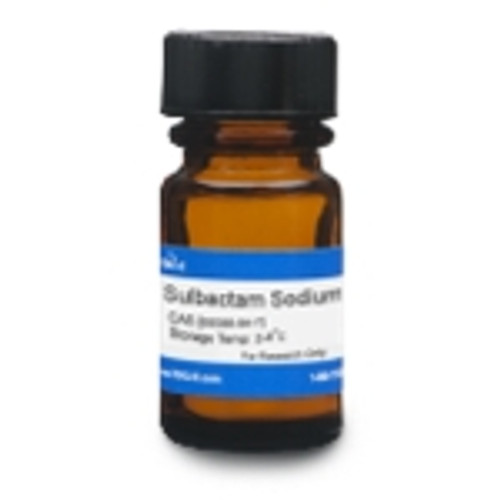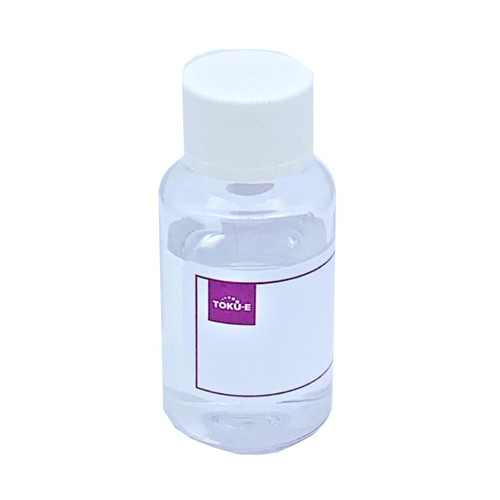Ampicillin Sodium/SulbactamSodium (2:1) is a combination of a β-lactam similar in structure to penicillin, with a β-lactamase inhibitor used to increase potency of β-lactam antibiotics.
We also offer:
- Ampicillin Anhydrous (A043)
- Ampicillin Sodium (A042)
- Ampicillin Trihydrate, USP (A009)
- Ampicillin Trihydrate, EP (A020)
It is used for microbiological in vitro susceptibility tests, and studies in pharmacokinetics and pharmacodynamics.
| Mechanism of Action | Like all β-lactams, Ampicillin interferes with PBP (penicillin binding protein) activity otherwise involved in the final phase of peptidoglycan synthesis. PBP’s are enzymes which catalyze a pentaglycine crosslink between alanine and lysine residues. Without a pentaglycine crosslink, the integrity of the cell wall is severely compromised ultimately leading to cell lysis. |
| Spectrum | Ampicillin targets Gram-negative non ESBL (Extended Spectrum β-lactamase) bacteria including Staphylococcus and Streptococcus and medically important enteric pathogens such as Shigella and Salmonella. Ampicillin has been found to be effective against certain β-lactam sensitive VRE or vancomycin resistant Enterococcus; a glycopeptide antibiotic resistant "superbug." |
| Microbiology Applications | Ampicillin/Sulbactam is commonly used in clinical in vitro microbiological antimicrobial susceptibility tests (panels, discs, and MIC strips) against Gram-positive and Gram-negative microbial isolates. Medical microbiologists use AST results to recommend antibiotic treatment options.
Media SupplementsAmpicillin can be used as a selective agent in several types of isolation media: Aeromonas Medium Base - Ampicillin Selective Supplement |
| Eukaryotic Cell Culture Applications | Ampicillin is routinely used to select for cells containing the pcDNA3.1 and pEAK10 resistance plasmids in cell line A904L at an effective concentration of 50 µg/mL. For additional information, please visit our cell-culture database. |
| Molecular Formula | Ampicillin Sodium: C16H18N3NaO4S Sulbactam Sodium: C8H10NNaO5S |
| Impurities | Dichloromethane: ≤0.06% Acetone: ≤0.5% Ethanol: ≤0.5% Ethyl acetate: ≤0.5% |
| References |
Pitout JD, Sanders CC, Sanders WE (1997) Antimicrobial resistance with focus on beta-lactam resistance in Gram-negative bacilli. Am. J. Med 103(1):51-59 PMID 9236486 Waxman DJ and Strominger JL (1983) Penicillin-binding proteins and the mechanism of action of beta-lactam antibiotics. Ann. Rev. Biochem. 52:825-869 PMID 6351730 Yang W, Zhang L, Lu Z, Tao W, Zhai Z (2001) A new method for protein coexpression in Escherichia coli using two incompatible plasmids. Protein. Expr. Purif. 22(3):472-478 PMID 11483011 |
| MIC | Diplococcus pneumoniae| 0.01 - 0.04| 1413| Haemophilus influenzae| 0.04 - 0.8| 1413| Neisseria gonorrhoeae (penicillin-resistant)| 4 - 128| 1408| Neisseria gonorrhoeae (penicillin-susceptible)| 0.008 - 0.25| 1408| Stenotrophomonas maltophilia| >32 - ?| 938| |








